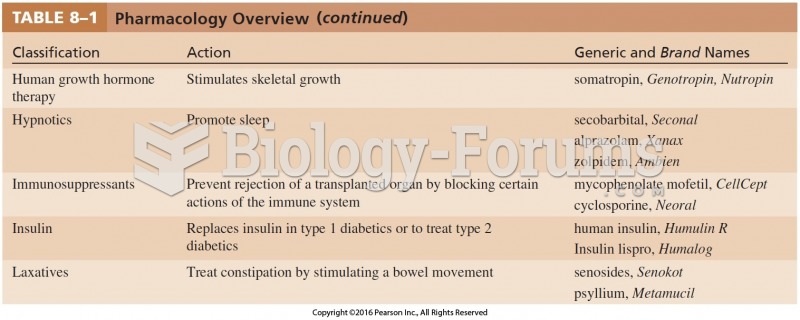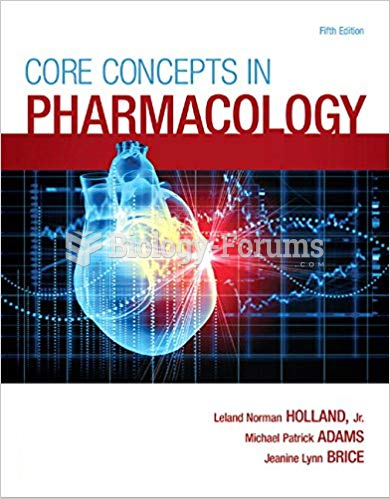|
|
|
Did you know?
The most destructive flu epidemic of all times in recorded history occurred in 1918, with approximately 20 million deaths worldwide.
Did you know?
More than 4.4billion prescriptions were dispensed within the United States in 2016.
Did you know?
Computer programs are available that crosscheck a new drug's possible trade name with all other trade names currently available. These programs detect dangerous similarities between names and alert the manufacturer of the drug.
Did you know?
Medication errors are more common among seriously ill patients than with those with minor conditions.
Did you know?
Cytomegalovirus affects nearly the same amount of newborns every year as Down syndrome.







